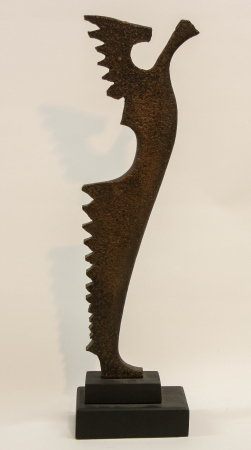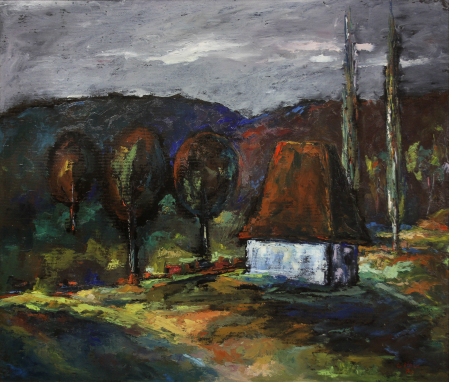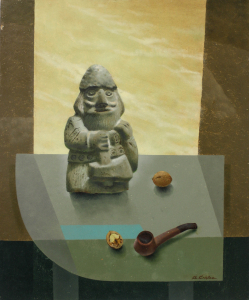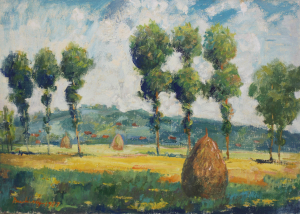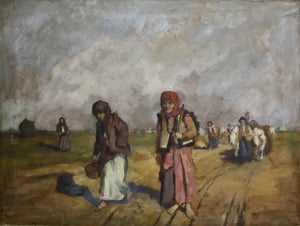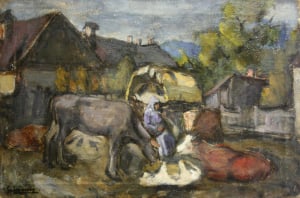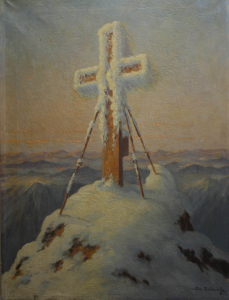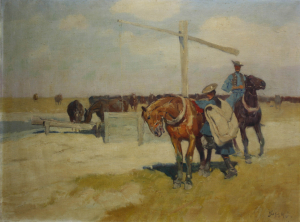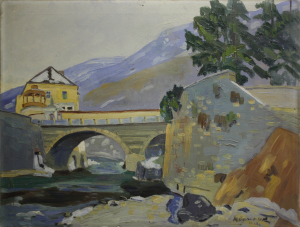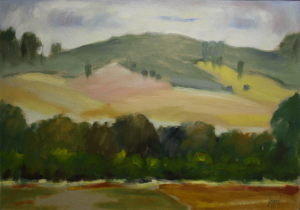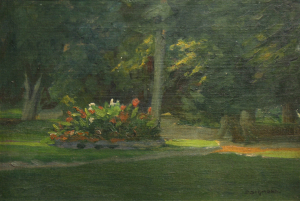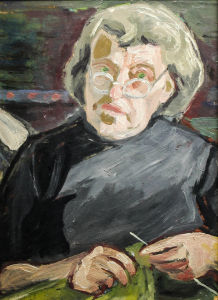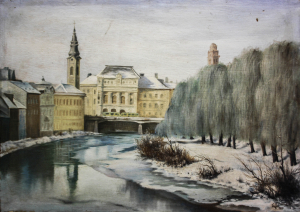DISCOVER DISCOUNTS I INVEST IN ART I OFFER GIFTS WITH PERENNIAL VALUE
oil, blackboard
73 x 58 cm
signed lower right with ocher: C. Pleșa
good state of conservation
expertise by Ph.D. Alexandra Rus, Art Museum, Cluj - Napoca
provenance: artist`s family collection
Carol PLEȘA (1911, Alba Iulia – 2006, Cluj-Napoca)
Artistic education: Academy of Fine Arts Bucharest (1935 – 1940), with teachers: MEDREA Cornel, Cecilia CUȚESCU STORCK, and Frederic STORCK.
Between 1937 and 1998, the artist opened a number of 41 national exhibitions of painting and sculpture (Bistrița, Cluj-Napoca, Dej, Mamaia, Năsăud) and international (Budapest - Hungary. Košice - Slovakia, Dűsseldorf, and Ulm - Germany, Hoorn.-.Netherlands, Haifa – Israel, Toffen, Bern and Rheinfeldenen – Switzerland).
His formation was initially closely related to the workshop of the humanistic, strongly national sculpture of Cornel MEDREA, it will later be influenced by the intellectual spiritualist approaches of the time, through his contact with Mircea Eliade, whom he also met in Medrea's workshop, but also thanks to his friendship to the professor of art history from Cluj, FELVINCZI Takács Zoltán. The initiatory itinerary undertaken in Palestine, India, and the Far East (China, Singapore) contributed significantly to the foundation of these influences. This trip was made possible thanks to a scholarship granted by the Minister of Culture Dimitrie Gusti, as a reward for participating in the workshop of Cornel MEDREA in the execution of the decorative sculpture that adorned the Romanian Pavilion at the Universal Exhibitions in Paris (1937) and New York (1939).
Later, in the period of full artistic maturation, overlapping the 3rd and 4th decades of the last century, he will decisively attach himself to the abstracting forms of Brâncusi and at the same time to the interwar constructivist avant-garde, overcoming in sync with them, the post-impressionist tendencies of most of his colleague's guild.
During the years of communism, the sculptor Carol Pleșa identified the deflating potential of a different plastic medium, that of painting, which becomes for him a natural means of survival in a world perceived as hostile. From here, the exaltation of expressionism with tragic valence is described by hilly landscapes, dilemmatic valleys, modest roofs of peasant houses, and lonely trees.
Bibliography:
FLOREA Vasile, Modern and Contemporary Romanian Art, Ed. Meridiane, 1976, Bucharest.
DEAC Mircea, 50 years of sculpture. Dictionary of sculptors from Romania 1890 – 1940
RADU Vasile, Carol Pleșa (1911-2006). Art and Anthroposophy Study and exhibition presentation Cluj-Napoca Art Museum August 31, 2016 – September 25, 2016
Delivery date: 2 zile lucrătoare
Product Code:
C934
Do you need help?
0040-773782689
/
0040-745525288
- Characteristics
- Reviews (0)
Certificate de AUTENTICITATE: Certificat de VÂNZARE
If you want to express your opinion about this product you can add a review.
write a review

![Carol PLEȘA, Birds [1] Carol PLEȘA, Birds [1]](https://gomagcdn.ro/domains/depozituldearta.ro/files/product/large/871881.jpg)
![Carol PLEȘA, Birds [2] Carol PLEȘA, Birds [2]](https://gomagcdn.ro/domains/depozituldearta.ro/files/product/large/091369.jpg)
![Carol PLEȘA, Birds [3] Carol PLEȘA, Birds [3]](https://gomagcdn.ro/domains/depozituldearta.ro/files/product/large/401259.jpg)
![Carol PLEȘA, Birds [4] Carol PLEȘA, Birds [4]](https://gomagcdn.ro/domains/depozituldearta.ro/files/product/large/247653.jpg)
![Carol PLEȘA, Birds [0] Carol PLEȘA, Birds [0]](https://gomagcdn.ro/domains/depozituldearta.ro/files/product/medium/871881.jpg)
![Carol PLEȘA, Birds [1] Carol PLEȘA, Birds [1]](https://gomagcdn.ro/domains/depozituldearta.ro/files/product/medium/091369.jpg)
![Carol PLEȘA, Birds [2] Carol PLEȘA, Birds [2]](https://gomagcdn.ro/domains/depozituldearta.ro/files/product/medium/401259.jpg)
![Carol PLEȘA, Birds [3] Carol PLEȘA, Birds [3]](https://gomagcdn.ro/domains/depozituldearta.ro/files/product/medium/247653.jpg)

